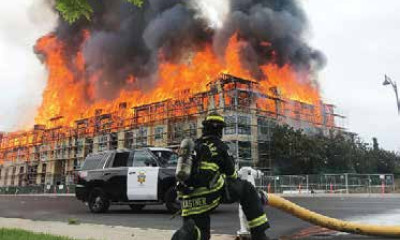Hurricane Claims - FAQ's Answered
Due to the widespread damage from hurricanes and windstorms, interpretation of coverage becomes a major issue for policyholders seeking to recover all the monies due under their insurance contract. When these events occur, it opens the door to many complicated ambiguities with insurance during the adjustment process. We help answer some of the questions that arise during hurricane claims.
1: How can a licensed public adjuster help me following a hurricane claim?
Following any disaster, the available services provided by insurance companies are limited. Also, it is very typical for insurance companies to rotate adjusters in and out of the disaster zone, meaning you are subject to re-educating adjusters from the insurance company over and over again. We know and understand the process and our practices and documentation facilitate a seamless post disaster loss adjustment process. Public adjusters at Greenspan Co./Adjusters International take over the burden of moving the claim through the insurance company and its many adjusters so you can focus on getting your business back in operation and/or your property restored.
2: How do I determine the best licensed public adjuster to represent me?
Make sure that the public adjuster that you hire has the depth of resources to handle your claim, along with the commitment to be present in Puerto Rico until your claim is settled. How long have they been in business? Have they done work in Puerto Rico before? Make sure that you are comfortable that they will only “fill their basket” with as many claims as they can comfortably handle? Are they members of the National Association of Public Insurance Adjusters (NAPIA)?
3: Will the insurance company try to undervalue my settlement?
Yes.
4: In the event of a hurricane, does my insurance cover the entire loss?
It depends on what you purchased. Generally speaking, a business owner’s policy that insures for hurricane will cover your physical assets including your building, improvements, fixtures, equipment, and stock; and your loss of revenue generally defined as your net profit or loss plus your continuing expenses. How those coverages are afforded, i.e. replacement cost, actual cash value and how large your deductible might be, are strictly dependent on your policy.
5: Access roads to my commercial building have been shut down. Am I covered for this loss of income?
Many insurance policies cover for loss of business due to civil authority. Some policies cover for interference with ingress and egress to your property. Check your policy carefully for the duration of the coverage as well as how long business needs to be suspended before coverage is afforded.
6: What if my suppliers cannot make their deliveries? Is this covered under my policy?
Not likely, unless your insurance policy is endorsed for what is known as dependent properties coverage (also known as Contingent Business Interruption). Such coverage usually requires that you name the specific supplier. Also, it might make a difference why that supplier cannot supply you. Did that supplier sustain physical damage? Or is that supplier, too, impacted by someone else’s inability to supply them? Read your policy carefully. Check with your broker. Check with a qualified public adjuster.
7: Sales have been down following the reopening of my business. Am I covered for this?
That is dependent upon whether you have what is commonly known as an extended period of indemnity. An extended period of indemnity insures you for your lost revenue following your opening. It is typically written to cover the ”ramp-up” period it takes for you to realize your pre-loss sales. It is typically written for 30, 60, 90, 120, or 180 days. Check your policy.
8: What percent of my policy limit is my windstorm property deductible?
When hurricanes make landfall and wind causes the initial structural damage to a property, such as blowing off the roof or knocking out windows, the cause of loss is classified as windstorm. Windstorm damage often opens the door for massive amounts of water and debris to cause further damage to a structure. Unlike other causes of loss, such as pipe breaks or fires, which have a preset, fixed deductible, the deductible for a windstorm loss usually amounts to a percentage of the overall policy limit. Even though these percentages may seem small — either 2, 3 or 5 percent — these percentage deductibles can add up quickly and put a serious strain on your financial recovery. One way to mitigate such issues is for property owners to purchase a buy-back deductible. This is supplemental coverage that allows policyholders to forfeit paying a deductible by opting to pay an additional premium.
9: Is mold covered under my policy? Is it excluded? Is it capped?
Any time water enters a building there is a potential for mold, whether it comes from a windstorm or from a simple pipe break. Regardless of your insurance coverage, the first step to containing a mold problem is to completely remove all wet carpet, drywall, and contents, and dry out the site immediately after exposure. This will reduce the potential for serious mold development — which has been proven to be capable of producing toxic effects in humans and animals — and mitigate further damages. In recent years insurance carriers have expended extraordinary amounts of monies as a result of mold claims, and a majority of insurance policies have been rewritten to either include a mold exclusion or to cap the insurance available for mold remediation. At times, this cap is far below the true costs to remediate mold, so eliminating the potential for mold will help protect against an unexpected out-of-pocket expense.
10: Do I have Code or Ordinance Coverage? If so, is it enough?
Over the years changes in your local building codes and ordinances have been enacted to reflect new standards for construction. If your older property suffers a substantial loss, fixing it may require higher construction standards. Simply replacing your property as it was may not be enough to meet these new laws and codes. Building ordinance or codes coverage, which pays to rebuild a structure to comply with current building codes, can be added to your policy. As building codes evolve each year, it is strongly recommended that you understand the exposure you could face if a major windstorm, or any type of loss — damaged your home or building, and what codes would be triggered upon reconstruction.
11: How far does Debris Removal Coverage go?
Debris removal is an expense often incurred in the aftermath of a windstorm. In the event of an extensive loss, some policy language for debris removal allows for an additional 5, 10 or 25 percent of debris removal coverage above the policy limit. Your policy language may clearly outline the additional coverage, or the wording may be ambiguous, causing a potential disagreement with the carrier over your payment. To avoid this problem, be certain of your coverage before you need it.
12: Do I have enough Business Interruption and Extended Period of Indemnity coverage? How far does it go?
If you run a business, there is no greater life support to its survival than business interruption coverage. Having adequate coverage for the profits you would have earned had the disaster not occurred provides the support you need while rebuilding your business, a process that can take several months or longer. Business interruption coverage (also known as Business Income) can also pay for continuing expenses, such as payroll, while your operations are down. A business owner may choose coverage at a fixed dollar limit, or for the “actual loss sustained,” which covers your loss from the date the coverage is triggered to the return to “normal business operations.” In addition, an “Extended Period of Indemnity” is an endorsement option that will extend your business interruption claim beyond your return to “normal business operations.” This endorsement can be 30 days, 60 days, 90 days, and so on, and provides a cushion as you return to your pre-loss sales volume. Understanding your potential losses and having an idea about how long it will take to regain a steady flow of business after rebuilding is key to properly insuring against your potential business interruption exposure.
13: What does Extra Expense cover? How can it help me?
Extra expense insurance covers expenditures over and above your normal expenses following a covered insurance loss, to continue the operation of the business. The intent of extra expense coverage is to have monies available to pay for reasonable expenses required to mitigate any further exposure to a business interruption claim. When it comes to windstorm, businesses sometimes need to cover extraordinary costs associated with massive cleanup, e.g., rental equipment; relocating to a temporary location while they rebuild the space; distributing goods from a different warehouse with an associated increase in shipping costs; or paying overtime for employees. These extra costs fall under extra expense coverage. This is complementary to business interruption coverage, but some policies are written for business interruption without extra expense. If you don’t have extra expense coverage, consider talking with your broker about obtaining it.
14: What is Contingent Business Interruption coverage? Do I need it?
Contingent Business Interruption insurance (also known as Dependent Properties coverage) and Contingent Extra Expense coverage reimburse lost profits and extra expenses resulting from an interruption of business at the premises of a customer or supplier. For instance, if a supplier provides an important component for your manufacturing process, a severe insurance loss to that supplier could result in a shutdown of your manufacturing operations when that part becomes unavailable. This coverage can be purchased as an extension of your standard property insurance, and it only applies if the dependent property sustains a loss caused by a “causes of loss” stated in your policy.
15: When and how does Civil Authority trigger my policy?
All policies have language for civil authority, but some policyholders do not understand how it can work in their favor. When a windstorm causes a massive mandatory evacuation and a coastal area is extensively damaged, residents and business owners are often not allowed to return for several days or weeks due to safety concerns. In these cases, civil authority can trigger coverage for business interruption for a specified limited period. Most civil authority language requires that the situation extend beyond 72 hours in order for the coverage to come into effect.
16: What is Spoilage Endorsement and how does it protect my perishables?
Because a windstorm can cause massive power failures or mechanical breakdowns, perishables need to be insured with spoilage coverage. Prescription drugs and other pharmaceuticals, fruits, meats, miscellaneous foods and beverages, etc., need to be protected in case of a failure to maintain required refrigeration, cooling or humidity levels. These are common losses resulting from windstorms, especially if there is not a generator or other backup equipment in immediate operation to help protect perishable inventories.
17: What is Utility Service Interruption coverage? What is service interruption and off‑ premises power failure coverage?
Windstorms make businesses highly vulnerable to utility service interruption losses such as electricity, gas, water and telecommunications. Vulnerable businesses may be able to buy insurance coverage for losses resulting from this “service interruption” or “off-premises power failure.” The service interruption must result from a covered peril. Be aware that some policy language excludes coverage for damage to overhead power lines. When the power goes out, deductibles may vary from four hours up to 72 hours of service interruption before coverage kicks in. Review your coverage to assess whether you are adequately insured in case of a service interruption.







